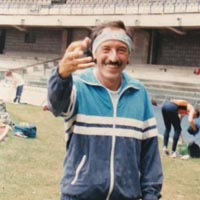 Smart Citations
Smart CitationsSee how this article has been cited at scite.ai
scite shows how a scientific paper has been cited by providing the context of the citation, a classification describing whether it supports, mentions, or contrasts the cited claim, and a label indicating in which section the citation was made.
Paolo Gava, a professional engineer, who has become a Master athlete, an amateur scientist and a lifelong friend
Paolo Gava, (Conegliano, Treviso, September 1, 1946 – Stra, Venezia, Italy, July 19, 2021) was a sustainable resources engineer, who worked in Italy, France and England, leading research programs well before the current international interest in countering global warming. Passionate about Tango, Paolo kept himself in shape for many decades by running or pedaling or roller-skating, after years of training as a semi-professional athlete, competing and winning Italian and European short distance races in the Master classes. Then, Paolo applied his engineering skills to optimize comparisons between the results of the different Classes of Master Athletes, questioning the rules used by Italian and World Master Sports Associations. Friendly discussing during an after-dinner, he shocked us claiming that, in absence of diseases and trauma (Early Aging), the aging decay is a linear process from 30 to 110 years. Under our friendly pressure he was able to publish his first biomedical article, detailing his mathematical approaches and results in a 2015 issue of Experimental Aging Research, titled: Age-associated power decline from running, jumping and throwing male master world records. To honor his other legacies during his last six years of life, we add here further examples of Paolo's scientific studies and his relationships with senior colleagues and young students of sports and aging sciences.
Downloads
How to Cite
PAGEPress has chosen to apply the Creative Commons Attribution NonCommercial 4.0 International License (CC BY-NC 4.0) to all manuscripts to be published.

 https://doi.org/10.4081/ejtm.2021.10260
https://doi.org/10.4081/ejtm.2021.10260





